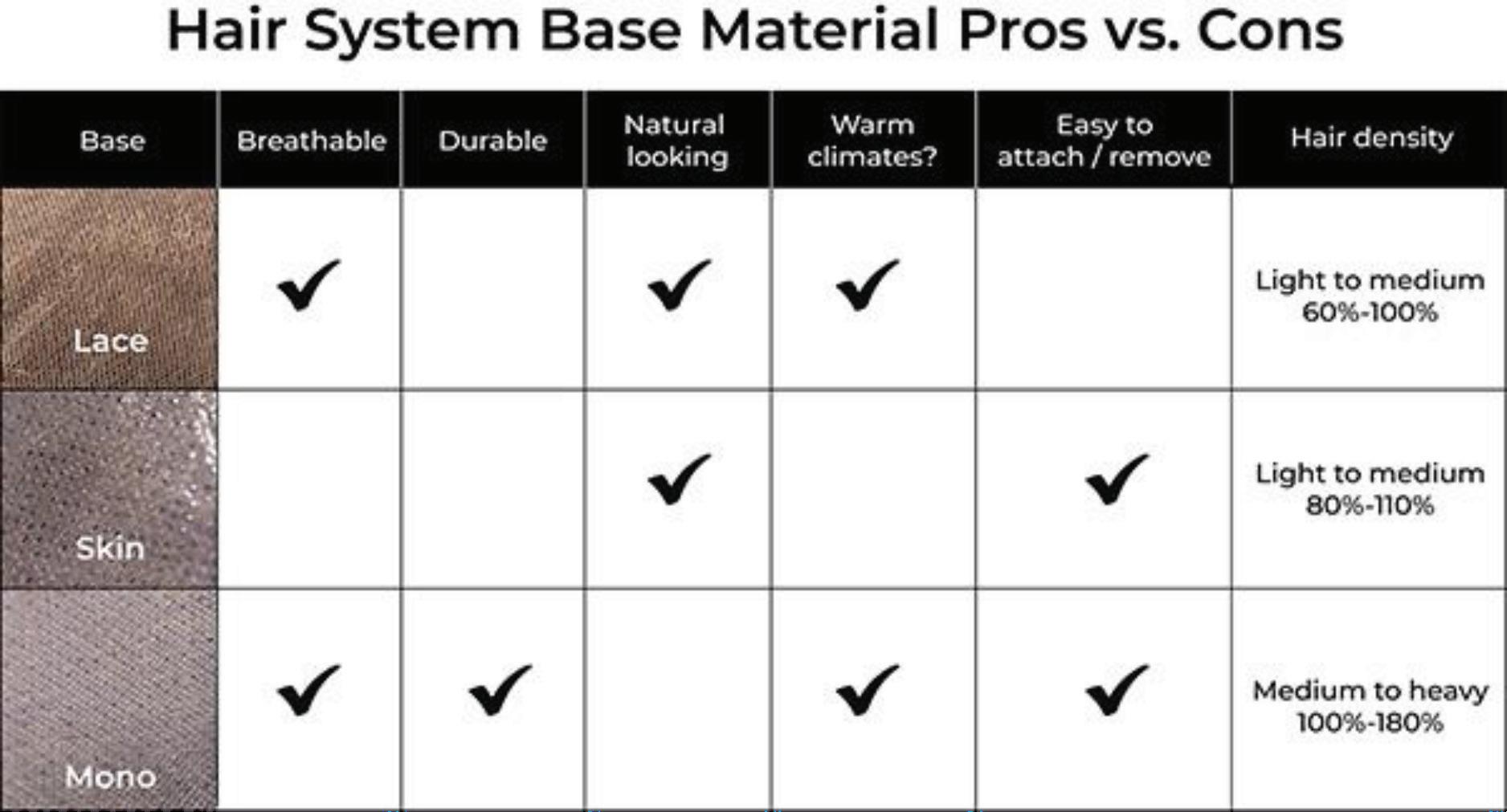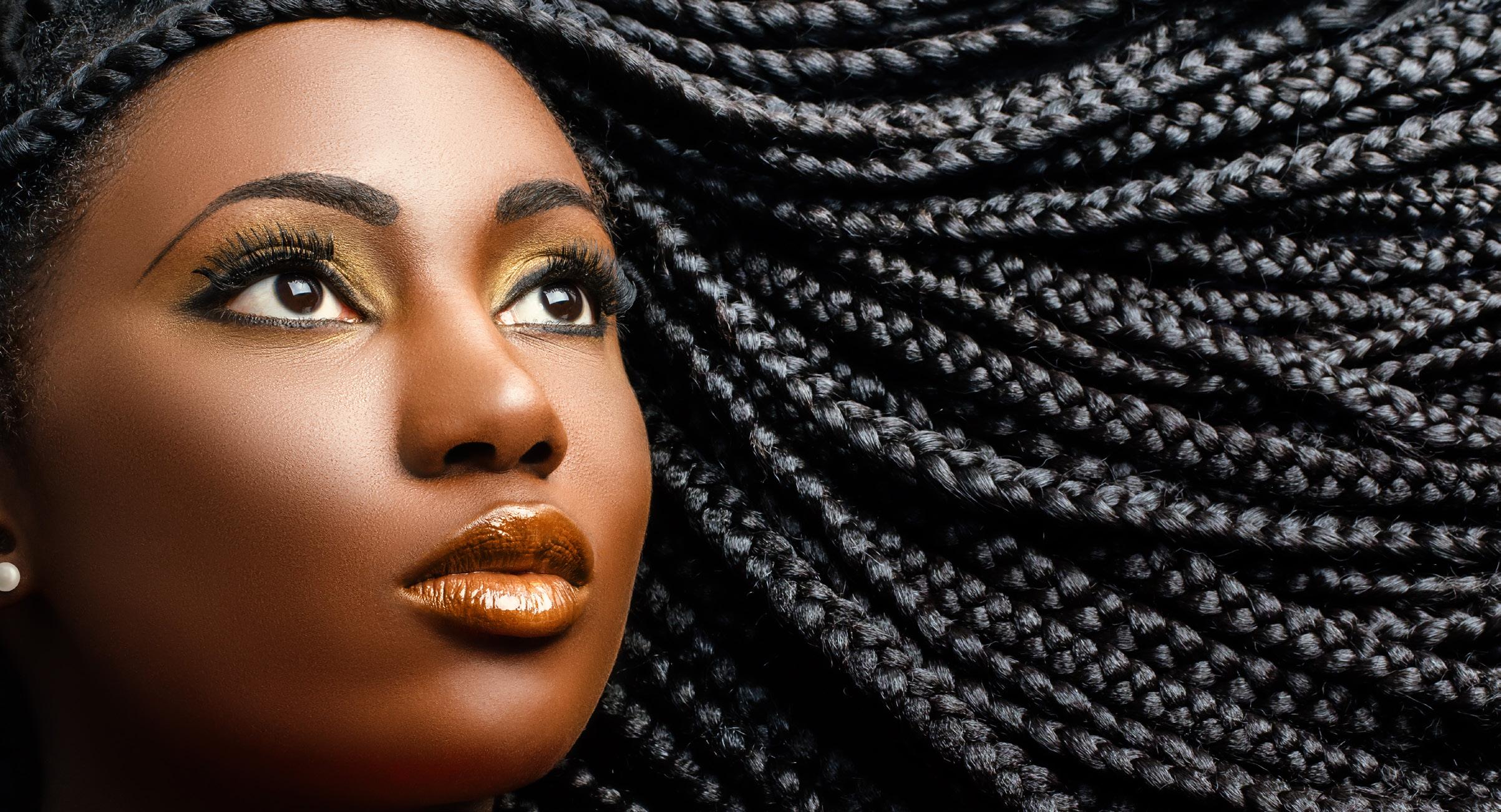
5 minute read
Which Non-Surgical Hair Replacement Service is Right for You?
By: Vanda McCauley ¦ Vanda Salon ¦ https://www.vandasalon.net/hair-replacement

Vanda McCauley
Advertisement
Hair is powerful. It’s a huge part of our image and one of the centerpieces of black culture, woven deep into the fabric of our tradition and history. Unfortunately, hair thinning, and loss are all too common problems that can affect anyone at any age. Naturally, this can be a substantial physical and mental struggle. After all, hair can be a symbol of identity, creative expression, and freedom, which is why non-surgical hair replacement is becoming increasingly popular as an option for those looking to camouflage their hair loss. These hair replacement services are considered an alternative to surgical hair transplants, which can be costly and invasive.
The non-surgical hair replacement process typically involves wigs, toppers, toupees, weft extensions, micro-links, and integration systems. The attachment of the hair replacement options may include using a combination of techniques such as tapes or adhesive to attach hairpieces or using clips, micro-link, or sew-in methods to attach extensions. The result of a non-surgical hair replacement service is seen immediately!
What’s great about this is that your natural hair is not altered during the process, resulting in a well-blended look natural. Many hair systems are virtually undetectable and long-lasting, and the installation process is relatively painless and very cost-effective. Hair replacement systems such as wigs, toppers, and toupees have come a long way in recent years, and it’s essential to understand the pros and cons of the different types of systems so you can decide which option is best for you.
Toupee and Topper:
The crown section of the head is where most people experience thinning or balding, and that’s precisely what the toupee (men) and topper (women) are made for; they cover the top portion of the head and can be secured with either tape or liquid adhesive if the scalp is bald or can be clipped on if the hair is thin. The hair toupee and topper are not the same as a wig; the wig, generally speaking, is a hair replacement system that provides coverage of the entire head.
Wig:
As previously mentioned, wigs typically cover the whole head and are used to cover hair thinning/ balding and create a fresh new look. Many famous entertainers use wigs for their theatrical needs, and people with no hair loss issues wear wigs for creative expression without committing to a color, cut, or texture-altering service.
There are three primary base materials for toupee, topper, and wig hair replacement systems — lace, skin, and monofilament. Each has advantages and disadvantages, with certain bases being more durable while others are more natural. The chart below is a display of the pros and cons of each.

The good news about toupees, toppers, and wigs is they can be worn while running, swimming, and participating in sports without falling off.
Weft Extensions:
Weft hair extension is a type of horizontal hair extension where hair strands are connected by a threaded seam at the top of the hair. This type of hair extension is often used for micro-links or sew-in hair extensions.
Aside from understanding the different types of non-surgical hair replacement options, it’s equally important to know that each replacement option can also be designed with real human hair and/or a heat-resistant synthetic fiber, and below are the pros and cons of human hair and synthetic fiber.

istock photo
Pros of Human Hair
• Human hair looks and feels natural.
• Human hair has shine and movement that synthetic hair can’t duplicate.
• Versatility allows you to style it like your own hair.
• Durable can last up to 2 yrs.
Cons of Human Hair
• Human hair is costly.
• It takes more time to style and care for.
• The style doesn’t hold like synthetic hair.
• Reacts to weather conditions and will go flat or frizz if weather dictates.
Pros of Synthetic Hair
• It can be worn right off the shelf with little to no styling.
• It will hold its style regardless of the weather.
• The price is reasonable.
Cons of Synthetic Hair
• It doesn’t have the versatility of human hair.
The Best of Both Worlds
Blended hair combines human and synthetic hair to get softness, style-ability, and perfect movement with a long-lasting style hold and the most vibrant colors.
Conclusion
All non-surgical hair replacement options have their pros and cons. Only you know your needs, wants, and budget. No matter which type of replacement unit you choose, remember that it’s essential to follow the care instructions to get the best life span from your hair.
Learn more about hair loss replacement options and services by visiting Vanda Salon at: www.vandasalon.net/hair-replacement.

QR Code
Vanda Salon

istock photo










